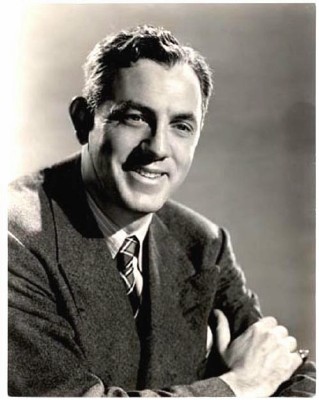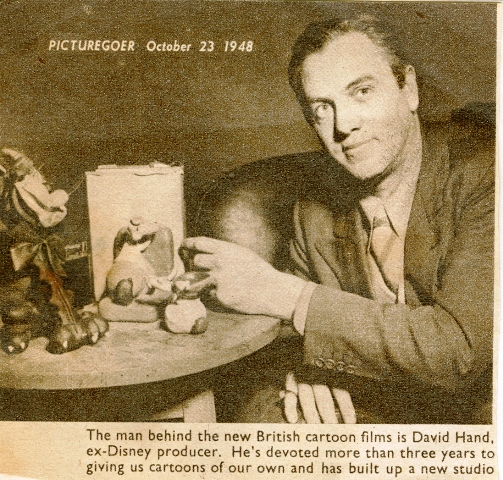Articles on David Hand and Moor Hall
DAVID HAND
By Marc Davis
(Note: The following article was written about 1984, four years before D.H. crossed into Spirit.)

David Hand (known as "Dave" to his Disney colleagues) is a true pioneer of the animation industry
When he completed his studies at the Chicago Academy of Fine Arts, Dave began a multifaceted career in the
animation industry long before it could possibly be called an industry. In 1919 he animated "Andy Gump" and
later did animation and direction on "Out of the Inkwell" for Max Fleischer. After doing a series of
instructional films for Eastman Kodak, Dave joined Walt Disney in January of 1930.
Dave's contributions at Disney were many. He began work as an animator and after completing about
three dozen early short subjects he moved into direction. He was responsible for many outstanding
Mickey Mouse and Silly Symphonies that included The Flying Mouse, Who Killed Cock Robin? Three Orphan Kittens
(which won and Academy Award) and many other memorable films.
He believed that it was his responsibility to get Walt Disney's ideas and sometimes seemingly
intangible thoughts on to the screen. In a lecture to young animators in 1936, Dave said, "Walt is a smart man --
he has had the vision, he's going on and on. I can't catch him, and you won't be able to catch me." He
became Supervising Director for Walt Disney's first feature length animated cartoon Snow White a
position he also held for Bambi and Victory Through Airpower. And, when Walt needed a
production supervisor he turned to Dave.
Toward the end of World War II, Great Britain's J. Arthur Rank, wishing to become competitive
in the field of animation, offered David Hand the opportunity to take their embryonic cartoon
division and build it into a world-wide quality cartoon studio. In England, this was the time of food ration stamps,
and the studio even raised its own vegetables in an adjacent hothouse. Here Dave was responsible for the
Musical Paintbox series and all of the Animaland characters.
One of the highlights of his years with J. Arthur Rank was a visit by Queen Mary extending
her appreciation for David Hand's contribution to British Animation. By now he felt his mission in England
was accomplished and he returned to the U.S.A.
1984 finds Dave Hand as an author/photographer with several published books to his credit. The
most recent one features the talents of his sculptress wife, Martha, and her living doll
family. Although Dave has never lost touch with those in the animation field, he said that his
present most important desire is giving full support to his wife's ever-expanding artistic career.
SOME NOTABLE FILMS
In his years at Disney, Hand was credited with about 70 shorts and three features. Among them were
the first color cartoon, Flowers and Trees (1932), animator, and such outstanding shorts as
The Flying Mouse (1934, Who Killed Cock Robin (1935)Nominated for an Academy Award,
Pluto's Judgment (1935),Three Orphan Kittens (1935) won an Academy Award,
Mickey's Polo Team (1936), Three Little Wolves (1936), Thru the Mirror (1936),
Alpine Climbers (1936), and Little Hiawatha (1937), director on all the latter. He
was supervising director on the features Snow White and the Seven Dwarfs (1937) and Bambi
(1942) and was animation supervisor on Victory Through Air Power (1943.
Copyright: Walt Disney Poductions
NEWS ITEM: On Sunday, October 25th 1986 the Associated Press carried the following story out of San Luis Obispo, California.
The Frank Thomas quote
says a lot.

CLIP: Remember Picturegoer Magazine?

A clipping from the famous magazine -- dated too! David Hand was pictured displaying models
from the Animaland film productions. Clipping used by kind permission of IPC Media, London, UK.
Note: If anyone has good readable copies of articles published during the G.B. Animation days, and would like to see them included in the Memorabilia of GB Animation, Moor Hall and David Hand, please send them to me -- Bob Egby, at the address on the Moor Hall Index Page. Thanks.
Back to our Moor Hall Index
 David Hand (known as "Dave" to his Disney colleagues) is a true pioneer of the animation industry
David Hand (known as "Dave" to his Disney colleagues) is a true pioneer of the animation industry